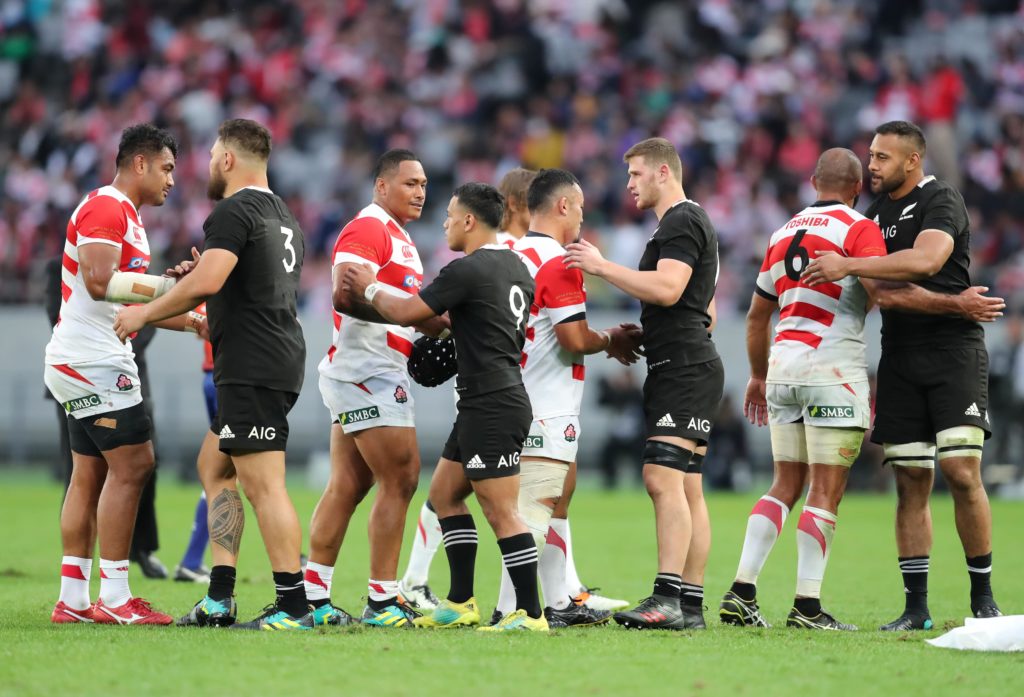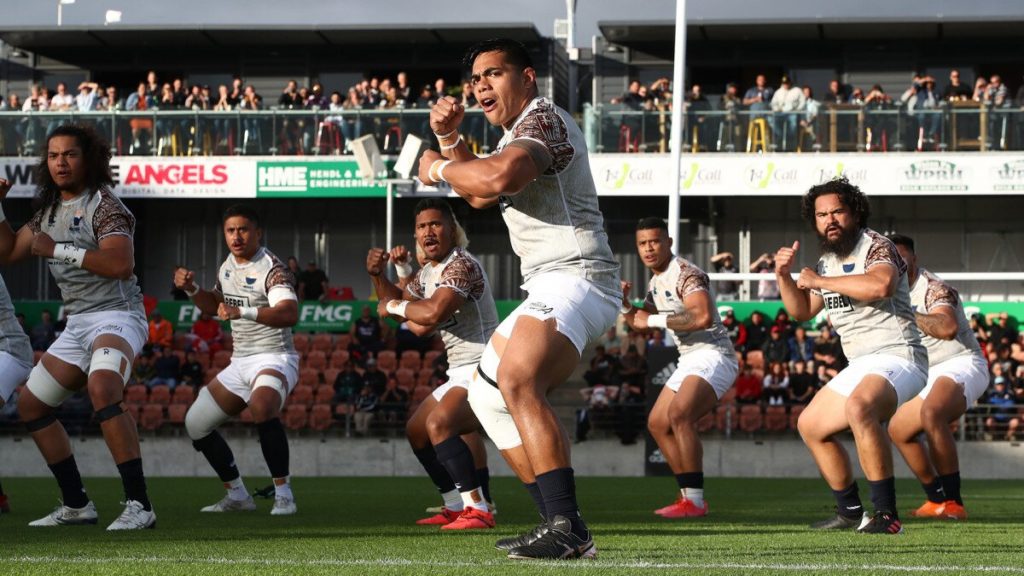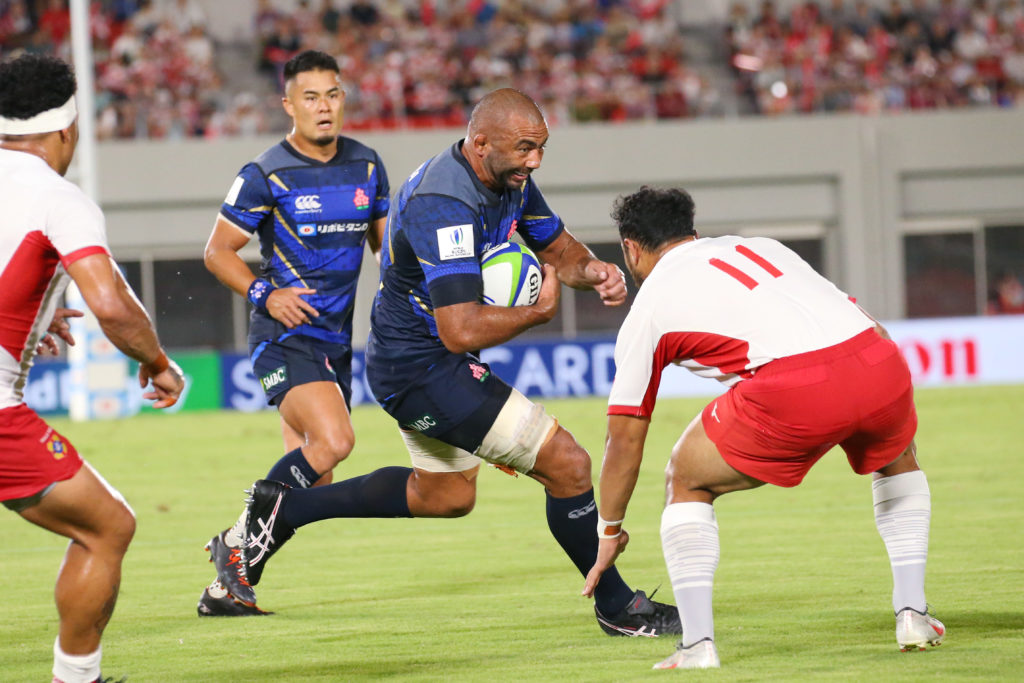After over a year without test rugby action, Japan sprung back to life with an impressive performance against the British and Irish Lions in Scotland, falling 18 points short of the behemoths of world rugby.
At the same time, Tonga and Fiji are finally getting some meaningful mid-year test matches while Samoa are in the midst of an almost unheard of four-game July schedule.
Despite the goodwill that exists right now in the aftermath of one of the most disrupted years in the sport’s calendar, it’s the coming months that will really separate the haves from the have nots.
After a year on the back-burner, talks have again emerged that suggest Japan could be nearing admission into The Rugby Championship, joining the likes of New Zealand, Australia, Argentina and South Africa as the Southern Hemisphere’s tier-one nations.
In November, the Brave Blossoms are also scheduled to play fixtures against Australia, Ireland and Scotland, have all but locked in a game against the All Blacks, and will likely add another test against tier-one opposition to their end-of-year agenda.

For the Pacific Island nations, however, the future schedule is considerably more barren.
Tonga and Fiji are currently set to play a solitary tier-one nation apiece at the end of the year. Meanwhile, the biggest game on Samoa’s calendar is a match against the Barbarians – which falls outside of the test window so the majority of the nation’s Europe-based players won’t be available for selection.
While every union left, right and centre is lining up to play Japan – after making their first-ever World Cup finals appearance in 2019 – the Pacific Island nations are being left to wallow, despite achieving similar on-field feats well before Japan, and boasting considerably better records against tier-one teams.
Japan, however, boasts two major advantages over the Pacific teams.
The first is that the Top League already provides Japan with plenty of professional players from whom to select a squad from. Such a broad base means the Brave Blossoms will never be short of young talent.
While Japan remains a hugely untapped market, there’s still plenty of room for growth within rugby’s major centres and the addition of the Pacific Islands to regular top-flight rugby will enhance the product on offer.
The second is the size of the market. With a population comparable to the United Kingdom and France combined, there’s no doubt that there’s a huge untapped audience of rugby fans in Japan – even if there are many other sports that currently dominate the market.
Samoa, Tonga and Fiji won’t ever be able to compete financially with Japan, but there’s no doubting that a more competitive international arena would attract a greater audience from around the world – especially with the athletes that the Island teams can call upon.
While Japan remains a hugely untapped market, there’s still plenty of room for growth within rugby’s major centres and the addition of the Pacific Islands to regular top-flight rugby will enhance the product on offer.
In terms of the player pathway issue, the addition of Moana Pasifika and Fijian Drua to Super Rugby next year will help to ensure more players are being exposed to top-flight club rugby while also providing opportunities for greater cohesion amongst the Island teams’ ranks.
That increased cohesion could have a bigger impact on international performance than many anticipate. While New Zealand have five teams to pick all their test players from, Samoa’s most recent squad includes men who currently represent 27 different clubs across eight different countries around the world. It’s a similar story for Tonga and Fiji.

The long-awaited introduction of the Pacific Island sides to Super Rugby will significantly help their national sides – but that still begs the question of how to best fit them into the international calendar.
Adding Japan and Fiji to The Rugby Championship has been mooted in the past. A six-team competition would freshen up what’s become a rather predictable and stale tournament – a far cry from its heydays when it was arguably the top international rugby competition in the world – but it would also leave Samoa and Tonga out in the cold.
Perhaps a better solution – at least for the short to medium term – would see The Rugby Championship reduced to a three-round competition amongst the current competitors and run alongside a revamped Pacific Nations Cup.
The PNC – the successor to the Pacific Tri-Nations – incorporated Samoa, Fiji and Tonga, as well as a host of other teams including Japan, USA, Canada, Georgia and representative sides from New Zealand and Australia.
It’s become an afterthought in the rugby calendar over the past few years with World Cup qualification often coinciding with the competition and regularly forcing format re-shuffles – but that doesn’t mean it couldn’t be relaunched as a second premier international competition for the Southern Hemisphere.
Perhaps Japan’s and Fiji’s inclusions would hasten their development, but The Rugby Championship (and the Six Nations, for that matter), are not meant to be development competitions and it harms the game as a whole if games are regularly getting blown out.
Adding Japan and Fiji to The Rugby Championship would put huge pressure on those two nations to quickly bring themselves up to the level of the other competing sides – an unrealistically hard ask.
While Japan have managed a few wins over tier-one teams in recent years, there’s a huge difference between galvanising for a home World Cup campaign and regularly competing against some of the best teams in the world week-in and week-out. Even this past month, the Brave Blossoms failed to record a win against a severely understrength Ireland side – which should really be bread and butter for a top team.
Similarly, while Fiji are knocking on the door of top-flight rugby, they’re not yet at a point where they could be foot it on consecutive weekends against New Zealand, South Africa and Australia.
Perhaps Japan’s and Fiji’s inclusions would hasten their development, but The Rugby Championship (and the Six Nations, for that matter), are not meant to be development competitions and it harms the game as a whole if games are regularly getting blown out.
Coupled with the issue that bringing Japan and Fiji into The Rugby Championship then leaves Samoa and Tonga without any comparable, proximate opposition, it seems clear that a better solution needs to be found.

By compressing The Rugby Championship into a three-week window, however, space would open up in the calendar for cross-over matches with a revamped four-team PNC. One year, the All Blacks could square off with Japan and Samoa, and the next they could play Fiji and Tonga. The final remaining week could be filled with a second Bledisloe Cup match, or another traditional game.
While there would be obvious benefits for all the nations involved, compressing the competitions would also ensure that World Cup years don’t compromise the annual tournaments, as currently happens.
There’s no doubt about it that Japan and Fiji need greater interaction with the top teams in the world, but that doesn’t need to come at the expense of other nations that aren’t too far behind them in the pecking order.
The introduction of Moana Pasifika and Fijian Drua to Super Rugby next year will ensure all three Pacific Island teams have young players climbing their ways through the ranks, while Japan already has its development pathways well entrenched.
A reintroduction of the Pacific Nations Cup – one that remains constant on the rugby calendar every year – would ensure high-level competition for all involved, while compressing The Rugby Championship and introducing cross-over matches with the PNC would produce a greater variety of matches and benefit both the developing nations and the established superpowers.


Comments
Join free and tell us what you really think!
Sign up for free